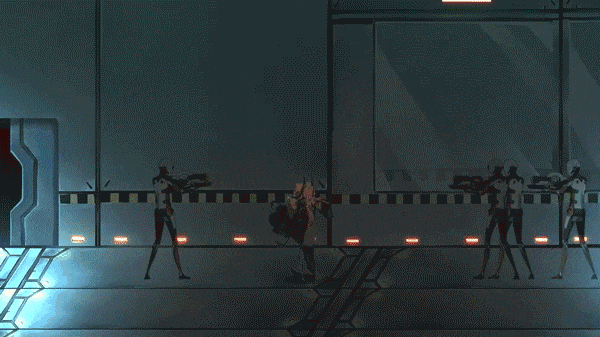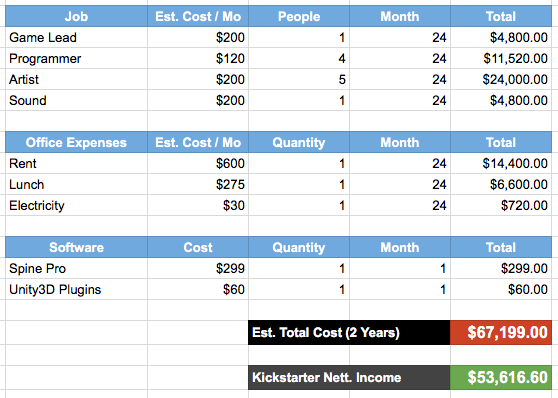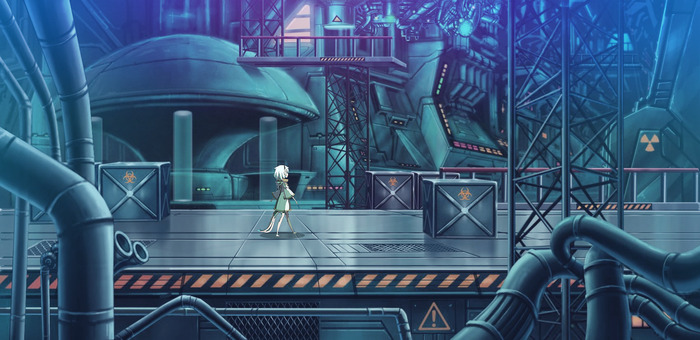When Indonesia based developer, Tinker Games, came to Kickstarter back in 2014 they were ready to launch a successful campaign. Billing themselves as, “One of Asia’s premier digital entertainment companies,” the team claimed to have plenty of experience in creating commercial games for a global audience. Their pitch for a 2D side-scrolling action and stealth adventure, Pale Blue quickly surpassed it’s funding goal, raising $59,574. Everything seemed to be going according to plan, but behind the scenes the studio was quietly descending into chaos.
In a recent Kickstarter update, the developers opened up about the problems behind the scenes. Finally revealing the real reason development on the project was stagnating for almost 3 years.
“Going from small & medium sized games (mobile), we expected some difficulty in developing PC game, but we were confident (too confident) that we could learn things on the go… Now, we know that we were imagining something that are way beyond what we could manage at that time.” [sic]
They decided to keep the Kickstarter goal lower than what they would actually need so that the campaign would succeed. Technically the campaign succeeded. However, even with the completion of stretch goals its total wasn’t enough to create the base game. Excited by the success of the campaign the team set this issue aside and rushed forward with development.
Who’s Steering The Ship?
When the Kickstarter ended some of the expected team members were actually still working on another project. Tinker Games pushed forward with a reduced team of several artists and only one programmer. Used to working on mobile games, they believed that the smaller team would be able to carry early development. This might have worked were it not for one glaring omission. None of them had experience managing a project of this scale.
“We didn’t have dedicated game designer, product manager, nobody to lead the timeline, minimal plan for the financing, and nobody to lock the game scope [sic],” the update explained. While Tinker had assigned a leader for the project, none of them had much experience actually managing a team.
“Our past mobile game developments was mainly just like a group of friend working together. In the end, nobody knows what to do with developing a game in this scale. We just did what we used to do.”[sic]
Since the team was mostly artists, for the first several months they did what they do best and created assets. Meanwhile the lone programmer had to puzzle all of these assets into the base game. Building a prototype with polished artwork meant that the art was dictating game design, instead of the other way around.
Time To Pay
Nearly a year after the campaign, Tinker Games brought their first integrated build to the 2015 Tokyo Game Show. After receiving feedback from testers, the team decided to revamp the project’s workflow. Unfortunately, their collaborative development approach meant that there was no one directing the change. More importantly, there was nobody keeping track of the budget.
As the team was working to create a (late) cinematic build they received news that the project’s funding had run out. The team put together a rough estimation of how the funds were spent, but they openly admit that it’s mostly based on guesses. From July 2016 onward there was no more money to pay the developers. Thanks to the dedications of the core team, development on Pale Blue did continue, but progress remained unfocused and troubled.
The team had to take on outside projects to continue paying their bills while working to deliver some semblance of the project they’d promised their backers. Through working for other companies the team started to pick up on better production methods and was even able to implement many new systems for their own project’s development. Sadly, by this time so many of their early mistakes were so deeply ingrained in the project that it was impossible to fully turn development around.
As Tinker Games continued to struggle the gap between the overall company and the team working on Pale Blue continued to grow. Finally, both sides came back together with an actual plan to complete a working prototype over the next three months. The team is small, but funded and (most importantly) guided by a dedicated game designer. The result won’t be the full game backers were promised in the Kickstarter. Instead it will be a core build that will later become the base for the final game.
Try And Try Again
The update concludes by asking backers for their feedback on the situation. While they provided dissatisfied backers with an email address to request refunds the team openly admits that they have no control over the company honoring these requests. Furthermore, with the smaller team they don’t have the manpower to dedicate to creating full updates across their social media channels, but hope to focus on at least one outlet to convey information to their backers.
It’s an imperfect solution to a complex problem. A problem that has been in the making from the project’s inception. Some of the game’s 1,305 backers have already chimed in the comments section and surprisingly they have mostly been supportive of the team and their future plans.
Openly owning up to their mistakes in the update seems to have bought them a second chance, but it’s a chance with many conditions. Most of which depend on continuing transparency throughout the next three months. Not every project gets an opportunity to bounce back from the brink. The Pale Blue devs will need to work hard so they don’t waste theirs.








This is getting ridiculous! Someone at Kickstarter needs to sit down and consult with these teams before they go on to crowdfund, there’s too many of these devs starting off on their own, not knowing how to budget accordingly. It feels like taking an intro course to entrepreneurship, should be a pre-requisite, before starting up a Kickstarter page.